Adelaide communities rejoice canonisations
People
Carmelites around the world, including lay Carmelites in Adelaide, are rejoicing the forthcoming canonisation of Brother Titus Brandsma. Also being canonised is French priest Charles de Foucauld whose writings inspired the foundation of the Little Sisters of Jesus which has a presence in Adelaide and Alice Springs.
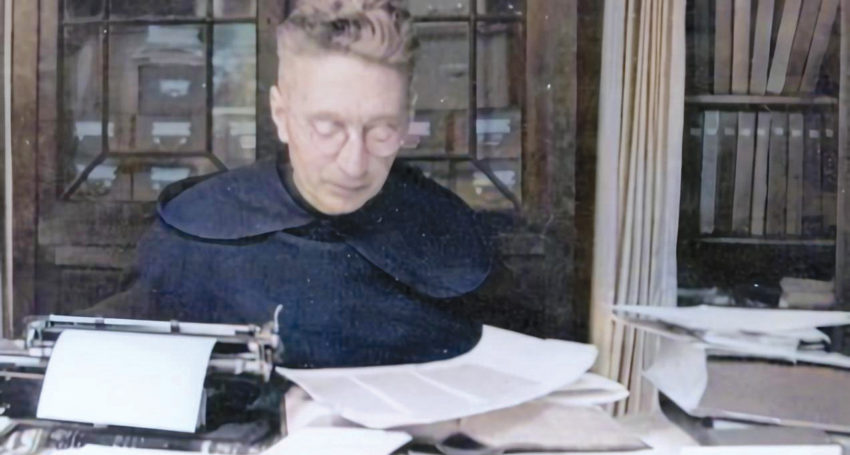
One was killed by rebels in the Sahara during World War I and the other executed in a Nazi concentration camp in World War II. Both were men of prayer, committed to living the Gospel and respectful of people of all faiths. Titus Brandsma and Charles de Foucauld were born in the 19th century but their legacies continue today.
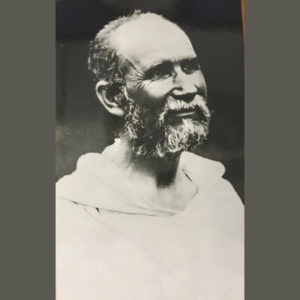
One of the last photos taken of Charles de Foucauld.
Charles de Foucauld was born in Strasbourg, France, on September 15 1858. Orphaned at the age of six, he and his sister Marie were raised by their grandfather in whose footsteps he followed by taking up a military career.
He lost his faith as an adolescent. His taste for easy living was well known to all and yet he showed that he could be strong willed and constant in difficult situations. He undertook a risky exploration of Morocco (1883-1884). Seeing the way Muslims expressed their faith challenged him and he began repeating, ‘My God, if you exist, let me come to know you’.
Advertisement
On his return to France, the warm welcome he received from his deeply Christian family made him continue his search. Under the guidance of a local priest Charles rediscovered God in October 1886 at the age of 28. ‘As soon as I believed in God, I understood that I could not do otherwise than to live for him alone,’ he wrote.
A pilgrimage to the Holy Land revealed his vocation to follow Jesus in his life of Nazareth.
He spent seven years as a Trappist in France and then Syria. In 1897 he worked as a handyman for the Poor Clares in Nazareth, living in a shed in their garden and leading a life of prayer and adoration.
Ordained a priest at 43 in 1901, he left for the Sahara, living at first in Beni Abbès and later among the Tuaregs, a nomadic people, in the Hoggar mountains.
Charles wanted to be among those who were, ‘the furthest removed, the most abandoned’. He wanted all who drew close to him to find in him ‘a universal brother’. With great respect for the culture and faith of those among whom he lived, his desire was to ‘shout the Gospel with his life’. ‘I would like to be sufficiently good that people would say, if such is the servant, what must the Master be like?’
Advertisement
At sunset on December 1 1916 Charles was killed outside his bordj (fortress). While rebels were raiding his hermitage two men arrived unexpectedly on camelback and the young boy guarding Charles panicked and fired the fatal shot.
Charles had always dreamed of sharing his vocation with others: after having written several rules for religious life, he came to the conclusion that this ‘life of Nazareth’ could be led by all. Today the ‘spiritual family of Charles de Foucauld’ encompasses several associations of the faithful, religious communities and secular institutes for both lay people and priests.
One devotee of Brother Charles was Magdeleine Hutin, founder of the Little Sisters of Jesus. After being introduced to the writings of Brother Charles by her father, she left for the Sahara in 1936 and on September 8 1939 she made her first vows. Little Sister Magdeleine of Jesus toured the world to found communities in different countries. In Australia, she visited Darwin, Sydney, Papua, Cairns, Tennant Creek and Alice Springs.
In 1945 she wrote: ‘You will not be asked to keep your eyes lowered in the name of religious reserve. Instead, I will ask you to open your eyes very wide so that you really see all the suffering around you and the beauties of human life and of the whole creation.’
Little Sister Cherryl, who is one of two Sisters living in Adelaide, said Magdeleine wanted the Sisters to “go to those who are farthest away, on the margins, neglected or ignored and to those who may never have heard that Jesus loves them, that Jesus suffered and died for them”.
“She always insisted that Brother Charles was and is our spiritual founder,” said Sr Cherryl.
The Little Sisters of Jesus have been present in Australia since 1953/54. The first two Little Sisters arrived in Alice Springs in 1956. They had a presence in Redfern, Sydney, until 1985 and a community in Collingwood, Melbourne, from the early 1970s to 2009. There was also a community in Murray Bridge and in 1985 it moved to Woodville Park until December 2011.
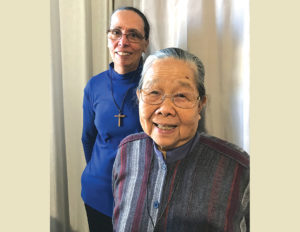
Little Sisters of Jesus Maria-Bach and Cherryl who live in Adelaide.
Now there are only four left in Australia: Little Sister Magali and Little Sister Claire in Alice Springs and Little Sister Maria-Bach and Little Sister Cherryl in Mansfield Park and Henley Beach.
“Perhaps people through our presence have been inspired by the life of Little Brother Charles of Jesus, soon to be Saint Charles de Foucauld,” said Sr Cherryl.
“Central to Charles’ life were long hours of silent Eucharistic adoration by day and by night and is also essential to us, his followers, an apostolate of prayer and friendship.
“Charles said that the ‘best prayer is the one in which there is the most love’ and this has inspired many more people in Australia beside the Little Sisters of Jesus and the Charles de Foucauld group in Adelaide that we know of.”
Following his canonisation on May 15, there will be a thanksgiving Mass for St Charles de Foucauld in St John Lateran on Monday May 16 at 10am Rome time (5.30pm SA) with online transmission. There will also be three Zoom sessions posted on YouTube on Sundays May 1, 8 and 22 at 10.30pm SA time.
A thanksgiving Mass for St Charles de Foucauld will be held at Mater Dei Church, Woodville Park on Monday May 16 at 5.30pm. All welcome.
Titus Brandsma was born in the Dutch province of Friesland in 1881. Raised on a dairy farm with his brother and four sisters, he was educated by the Franciscans and joined the Carmelite Order in 1898.
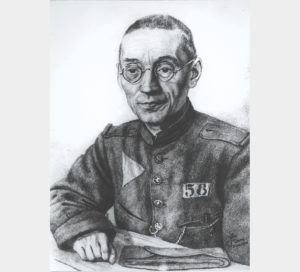
A pencil drawing of Titus Brandsma done by a fellow prisoner.
He made his first profession in October 1899 and was ordained a priest on June 17 1905. After further studies at the Gregorian University in Rome, Titus was awarded a PhD in philosophy in 1909. He also had a keen interest in spirituality and journalism, two areas which, together with his academic pursuits, would make up much of his life’s work.
He helped to found the Catholic University of Nijmegen in 1923 and later served as Rector Magnificus. In the years before the Second World War Titus was openly critical of the Nazi ideology, especially anti-Semitism. During the occupation of Holland, he defended the freedom of the press, in particular the Catholic press.
Related Story
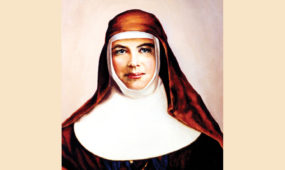 Opinion
Opinion
Called to holiness
When the Nazis invaded Holland in May 1940, Titus was an adviser to the Archbishop of Utrecht. He encouraged the bishops to speak out against the persecution of the Jews and the infringement of human rights generally by the occupiers.
The subsequent refusal by Catholic newspapers to print Nazi propaganda sealed the fate of Titus.
He was arrested by the Gestapo in January 1942 and interned in Holland before being transported to Dachau Concentration Camp. He was subjected to biological experimentation before being killed by lethal injection on July 26 1942.
On the day he died, the Dutch bishops issued a pastoral letter protesting strongly against the deportation of Jews from Holland.
Titus was a man of forgiveness and reconciliation, including in the most challenging situations. Before his execution he prayed that God might help the nurse who would administer the injection to repent of her actions in the camp and he gave her his rosary beads. The nurse later sought forgiveness at a Carmelite priory and was a witness in the process of his beatification by Pope John Paul II in 1985.
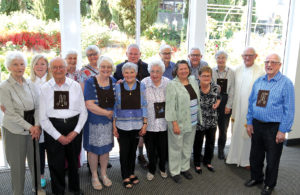
Members of the lay Carmelites at the Monastery in 2018.
He was a pioneer of ecumenism, forming the ‘Apostolate of Reunification’ aimed at better knowledge and rapprochement of Catholics with the Eastern churches. In addition to his support for the Jewish people, he pursued dialogue with the Protestants in the Netherlands.
There will be Masses to celebrate the canonisation of Titus in Carmelite parishes in Brisbane and Sydney. In Melbourne there will be a Mass on Sunday July 31 at 10.30am at the National Shrine of Our Lady of Mt Carmel, Middle Park.
Sources: www.vatican.va and www.carmelites.org.au
The canonisation of 10 saints in Rome on May 15 will be the Catholic Church’s first canonisation Mass since the start of the coronavirus outbreak. Along with Charles de Foucauld and Titus Brandsma, the saints are:
- Marie Rivier, a French nun who founded the Sisters of the Presentation of Mary in 1796 during the time of the French Revolution when many Catholic convents were closed and religious activities were outlawed;
- Carolina Santocanale, also known as Blessed Mary of Jesus, an Italian nun born in 1852, who founded the Congregation of the Capuchin Sisters of the Immaculate of Lourdes;
- Devasahayam Pillai, an 18th century Indian layman who converted to Catholicism from Hinduism, and who was killed in 1752 for refusing to refute his faith despite being brutally tortured;
- César de Bus, the France-born founder of the Fathers of Christian Doctrine, a religious congregation dedicated to education, pastoral ministry and catechesis;
- Luigi Maria Palazzolo, an Italian priest and founder of the Congregation of the Sisters of the Poor;
- Giustino Maria Russolillo, an Italian priest who founded the Society of Divine Vocations for men and the Vocationist Sisters;
- Anna Maria Rubatto, founder of the order now known as the Capuchin Sisters of Mother Rubatto;
- Maria Domenica Mantovani, co-founder and first superior general of the Little Sisters of the Holy Family.



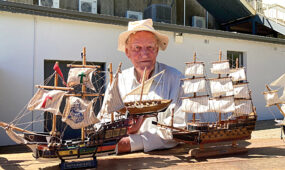
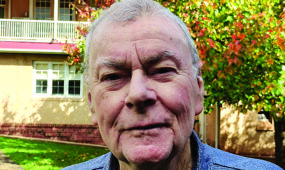
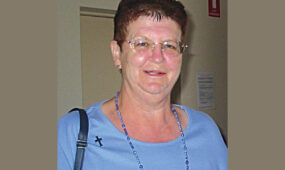
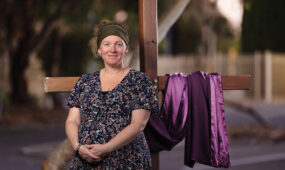

Comments
Show comments Hide comments